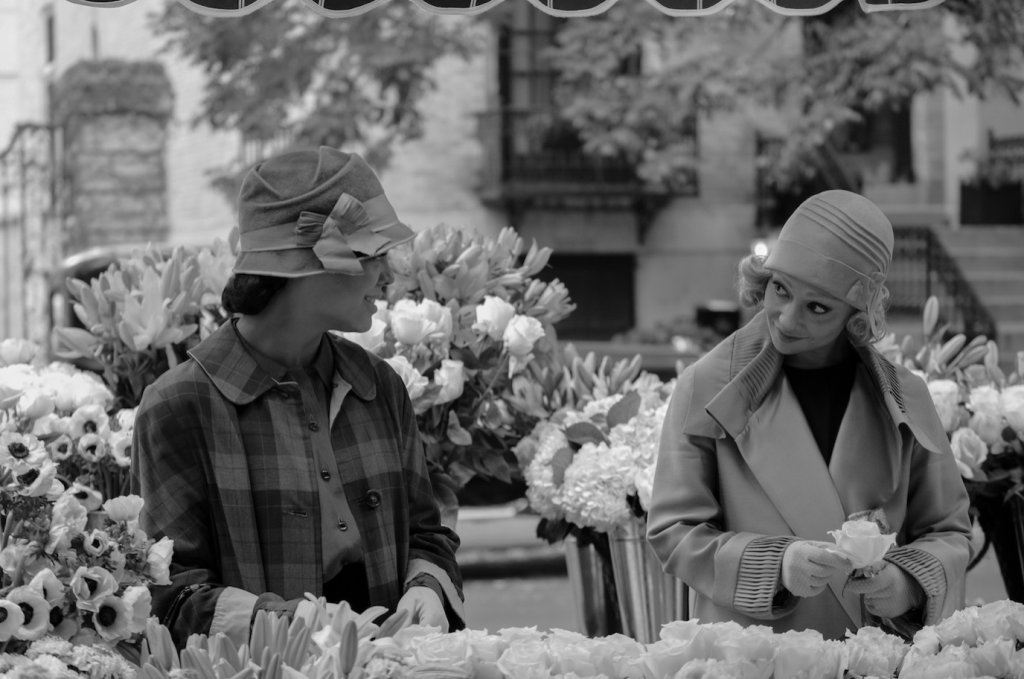 Allison Gaines
Allison Gaines
“Passing,” which first aired at the 2021 Sundance Film festival, unearthed a lively story from the Harlem Renaissance era based on a novella written by Nella Larsen and reimagined by director Rebecca Hall. Netflix, which will air the film in November, released the trailer, and it’s causing quite a cultural stir.
Ironically, some casual critics claim the actresses in the film don’t actually “pass for White.” But, unfortunately, they’re missing the point. To pass for White, a Black person doesn’t have to look identical to a White person, just close enough to be mistaken for one.
“We wouldn’t have a world where ‘passing’ occurred if there were no incentives associated with ‘Whiteness.’”
These critiques modernize the story’s impact, highlighting the complexities of racial identity in America. Not accepting these women as “passing” — which they certainly would be in the 1920s — only proves society moved the bar since then, and that folks that passed back then, perhaps would not pass now. Proximity to Whiteness is coveted in America because of anti-Black racism— that’s the dynamic at play here. Without racism, racial identity would be irrelevant.
While dropping us into a world filmed in black and white, the “Passing” trailer hints to us that “nothing is black and white.” It unearths shades of gray in our racial discourse through an intimate look into the lives of two women, each living on opposite sides of the color line.
While Irene — played by Tessa Thompson — lives as a Black woman and is married to a Black doctor, Clare — portrayed by Ruth Negga — “passes” for White and is married to a wealthy White man.
In an uncomfortable scene where Irene meets Clare’s husband, he brags: “I hate Negroes.” His comments add tension, thick enough to slice. Clearly, he thinks he’s married to a White woman. This scene highlights how deeply interwoven racism is in American culture.
Some White people hated the very thought of Black blood in their family tree— hence the One-Drop Rule. Because of the rise of genealogical testing, some White people are discovering hidden Black roots. While a few try to connect with the estranged Black side of their family, many White people still struggle to acceptthe diverse backgrounds they never knew they had.
As Clare sits on her husband’s lap, her face quickly shifts from joyful to solemn. That moment shows how privilege and danger live side by side when passing for White in the Jim Crow era.
The story follows the lives of these women as they find each other again. Both of them were mixed-raced women who grew up together but approached their Blackness much differently. For instance, when Clare asks Irene if she ever thought of passing, she responds, “No. Why would I? I have everything I ever wanted.”
Their friendship guides us through an open, honest discussion about race, colorism, privilege, and class in America.
While Irene — played by Tessa Thompson — lives as a Black woman and is married to a Black doctor, Clare — portrayed by Ruth Negga — “passes” for White and is married to a wealthy White man.
In an uncomfortable scene where Irene meets Clare’s husband, he brags: “I hate Negroes.” His comments add tension, thick enough to slice. Clearly, he thinks he’s married to a White woman. This scene highlights how deeply interwoven racism is in American culture.
Some White people hated the very thought of Black blood in their family tree— hence the One-Drop Rule. Because of the rise of genealogical testing, some White people are discovering hidden Black roots. While a few try to connect with the estranged Black side of their family, many White people still struggle to acceptthe diverse backgrounds they never knew they had.
As Clare sits on her husband’s lap, her face quickly shifts from joyful to solemn. That moment shows how privilege and danger live side by side when passing for White in the Jim Crow era.
The story follows the lives of these women as they find each other again. Both of them were mixed-raced women who grew up together but approached their Blackness much differently. For instance, when Clare asks Irene if she ever thought of passing, she responds, “No. Why would I? I have everything I ever wanted.”
Their friendship guides us through an open, honest discussion about race, colorism, privilege, and class in America.
https://www.youtube.com/watch?v=trwq3CNCMkU
Passing for White is a more common practice than many Americans realize. For instance, members of the upper bourgeoisie in New Orleans hosted Brown Paper Bag parties. Anyone who wanted to attend had to pass a Brown Paper Bag Test. If your skin was darker than the paper bag, you couldn’t enter — the ultimate illustration of “you can’t sit with us.” Being able to pass was a privilege, something darker-skinned Black people couldn’t choose.
Likewise, the Blue Veins Society only admitted Black people whose skin was light enough to see their veins. Passing, and the colorism implicit within the practice, was the byproduct of America’s racial caste system, which gives unearned privileges to white people. We wouldn’t have a world where “passing” occurred if there were no incentives associated with “Whiteness.”
In the modern era, we’re familiar with terms like code-switching, which identifies intentional or unintentional cultural masking to fit into white-dominated spaces. However, “passing” goes deeper than that. It was like going undercover because you would have to keep a secret about your racial identity from friends, employees, lovers, and even other family members. For instance, having a dark-skinned baby could expose a woman’s background. There was no off valve.
If you peek into most African Americans’ family photo albums, you will see family members who passed for White. Yet being light-skinned enough to “pass for white” and actively “trying to pass for white” are two different social phenomenons, which the film explores, as Irene and Clare’s friendship rekindles.
Films about passing became quite popular in the 40s and 50s but often relied heavily on the tragic Mulatto trope. However, it appears Rebecca Hall’s adaptation of Passing will move past that binary to show a character confidently and charismatically wielding her light-skinned privilege, while another woman embraces her Blackness.
Despite the complex social dynamics at play here, Passing — a narrative written in the 1920s — continues to tell a powerful, culturally relevant story. “Passing for White” is still a thing and many White people struggle to accept their Black relatives. Perhaps that’s why Netflix’s color conscious trailer has ruffled so many feathers.
Passing looks beyond the Black and White dynamic, shining a light on the gray areas of race, privilege, and class in America.




